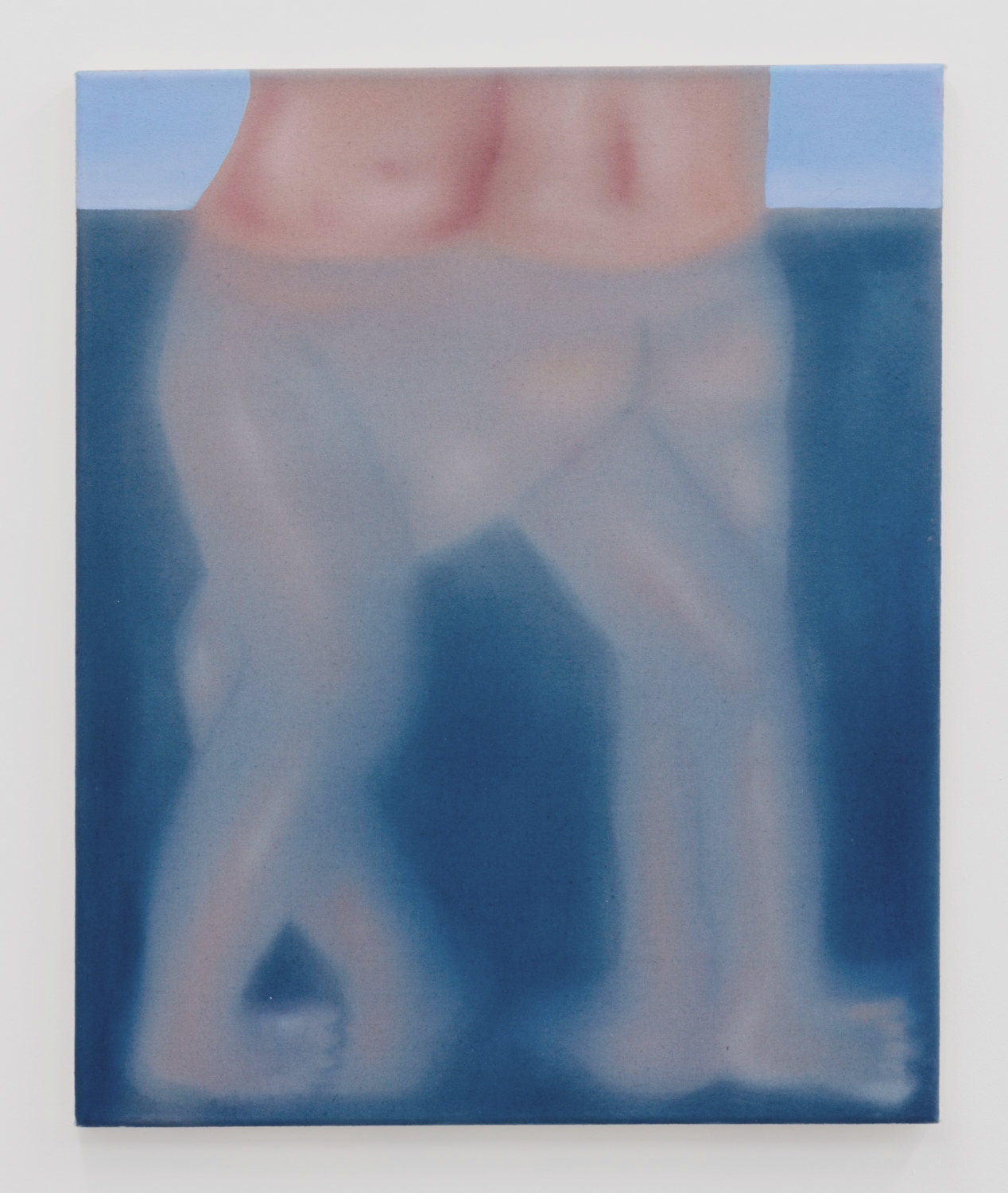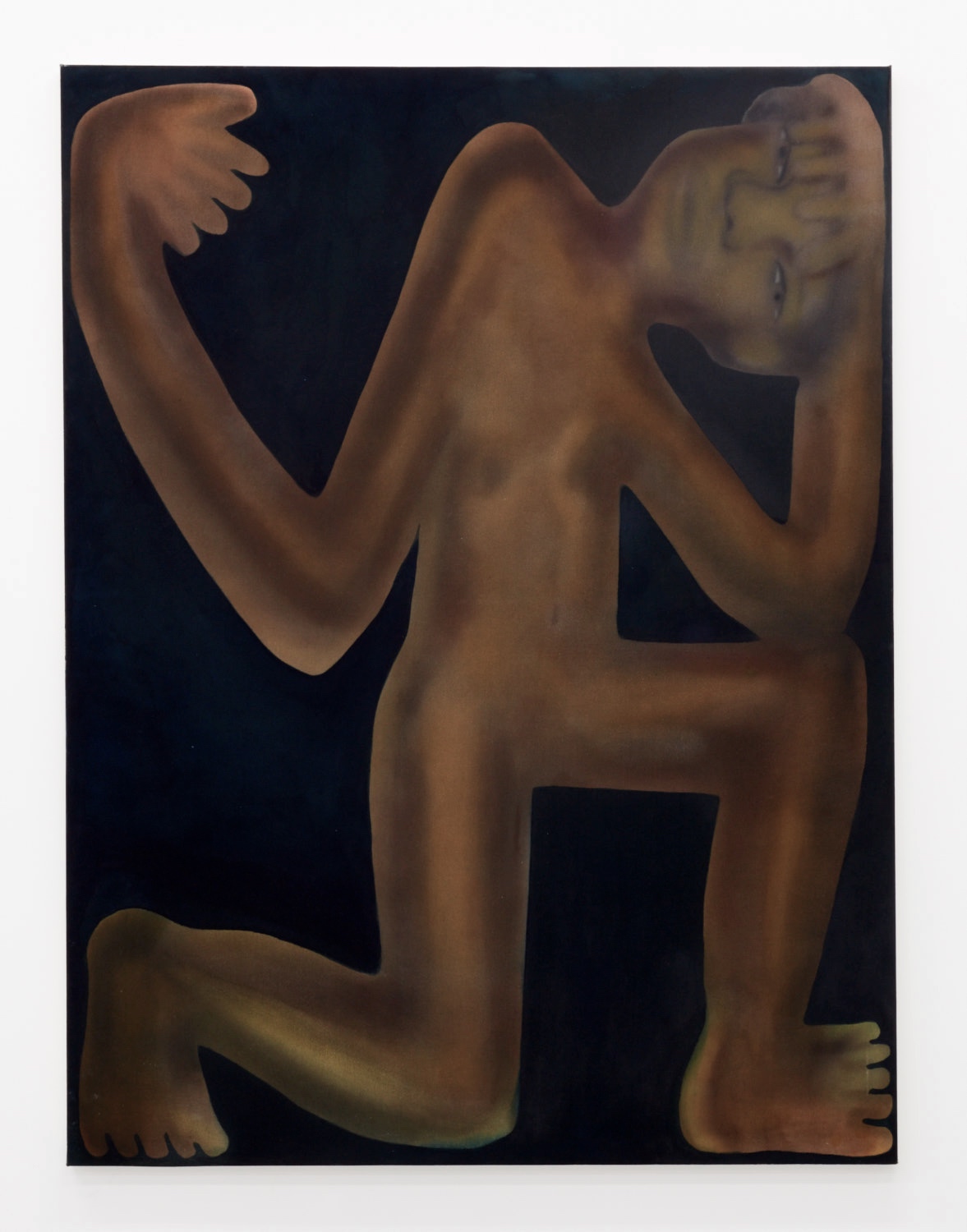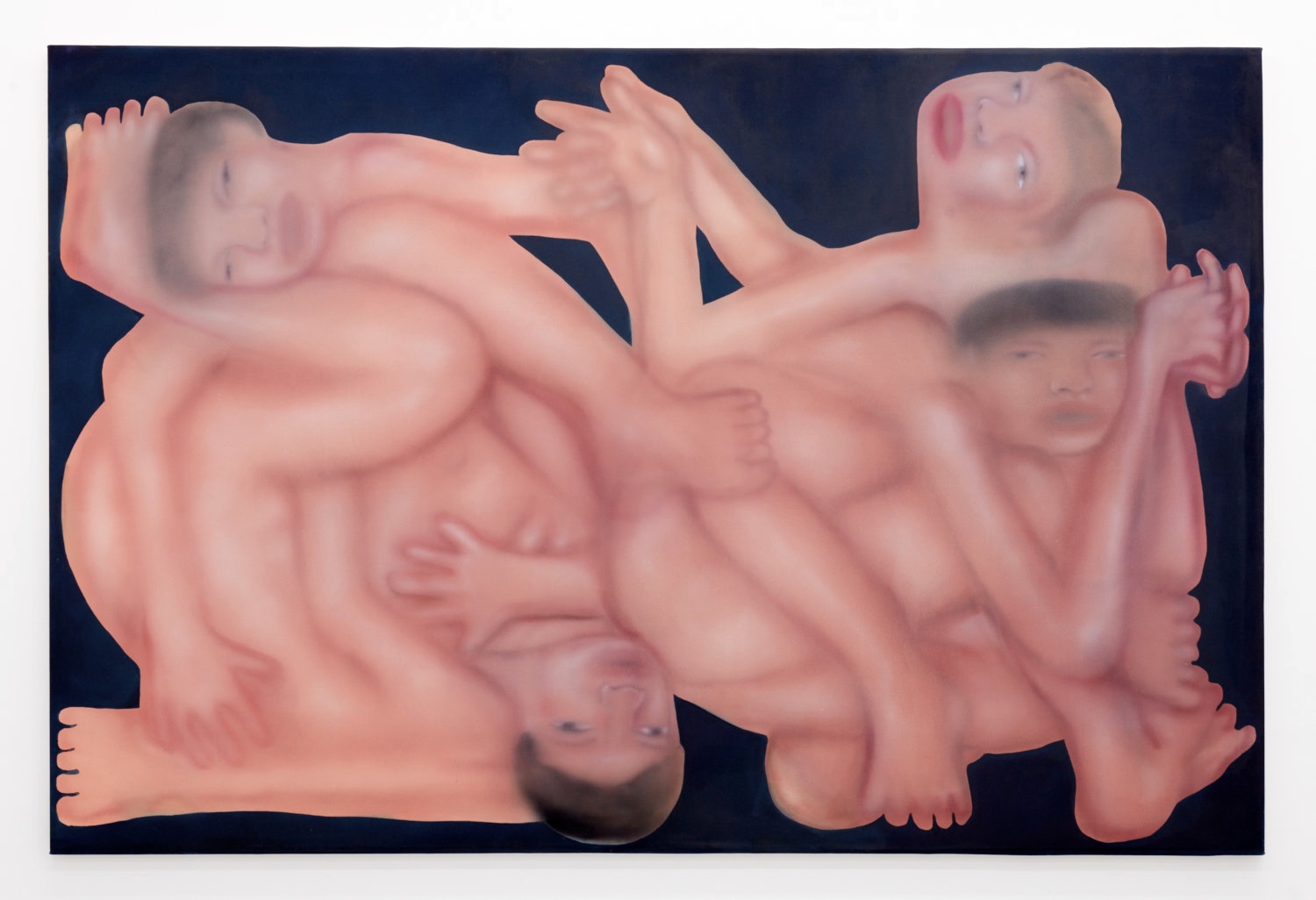Today at J Hammond Projects, emerging London-based painter George Rouy opens his second solo exhibition of the year, In Dirty Water. Featuring twelve new paintings in which soft figures float, swim and dance across the surface, the 23-year old artist presents a frieze-like assemblage of vibrating bodies. Disproportioned figures, uncomfortable contortions and awkward poses abound in oddly harmonious expressions of physical and emotional vulnerability. Hermetically trapping his figures within the frame of each ambitiously-scaled painting, George suspends his subjects in weightless blue expanses or richly coloured foliage, and envelops the viewer with his eerily intense canvases.

The figures in your paintings writhe in states of orgiastic ecstasy. To what degree does eroticism play into these works?
I never aim to make erotic work but I would say these paintings become erotic in spirit as all the figures blend into each other. I look at them as one mass and aim for the viewer to draw relationships and narrative from the composition. Some of my most recent works depict dancers and fighters: activities which are almost programmed inside us as quite primal impulses. When performing these acts, you descend into a stripped down reality and become completely exposed. They both have a seductive quality and I feel most people can relate to that.
What are you saying about the human figure by distorting it in such dramatic ways?
The disproportions of the body are irrelevant to me as I’m only interested on what feels right within the frame. I continually return to the tilted heads and these become a reference to my frustration, submission and vulnerability when faced with the unknown. This bent-neck motif has gradually morphed into a metaphor for separation, euphoria and desire for self-expression and I simultaneously enjoy the nihilism this presents in the figures.

We typically associate water as cleansing or purifying, In Dirty Water insists on a murkier narrative. What informed the title of the exhibition?
I have always been interested in the use of water within paintings and what it can represent and for me the water in the paintings feels dirty, like cold pond water. I wanted to remove the pure associations that water commonly carries. Immersed in varying levels of water, I wanted to describe how it feels when you begin immersing yourself in cold water and that uncomfortable but liberating feeling comes over your body, especially around your middle. In the works the figures sit calmly, acclimated to this sensation, almost numb. I want to draw parallels between the sensations of physical and emotional immersion and the search for a sense of liberation. Conversely, the deep blues that surround the figures in other works actually represent empty space more than water, and this void-like space allows me to contain my subjects in their entirety within the frame.
The figures in your paintings lack defining facial features which makes them harder to recognise or understand as being a relatable individual. Is this a deliberate choice?
I aim for them to have as little expression as possible which gives the viewer freedom to interpret the mood of the painting themselves. If the figures look directly at or through the viewer it removes any indication of a space outside the frame.

In the show, human bodies are flanked by a single horse and a bull, both symbols of strength and power. What do these creatures mean for the wider narrative of the exhibition?
I have always been attracted to symbolism and try to include this in every painting. The white horse is a recurring image that is used throughout history by many different civilisations. Along with the bull, these creatures represent strength and fertility and I feel I’m almost subverting that by bending the necks. Breaking the horse’s neck was a reaction to quite a turbulent time politically, a time when perceived strength comes under scrutiny and we realise our own vulnerability.

In Dirty Water is on view at J Hammond Projects, London until 28 October 2017.
